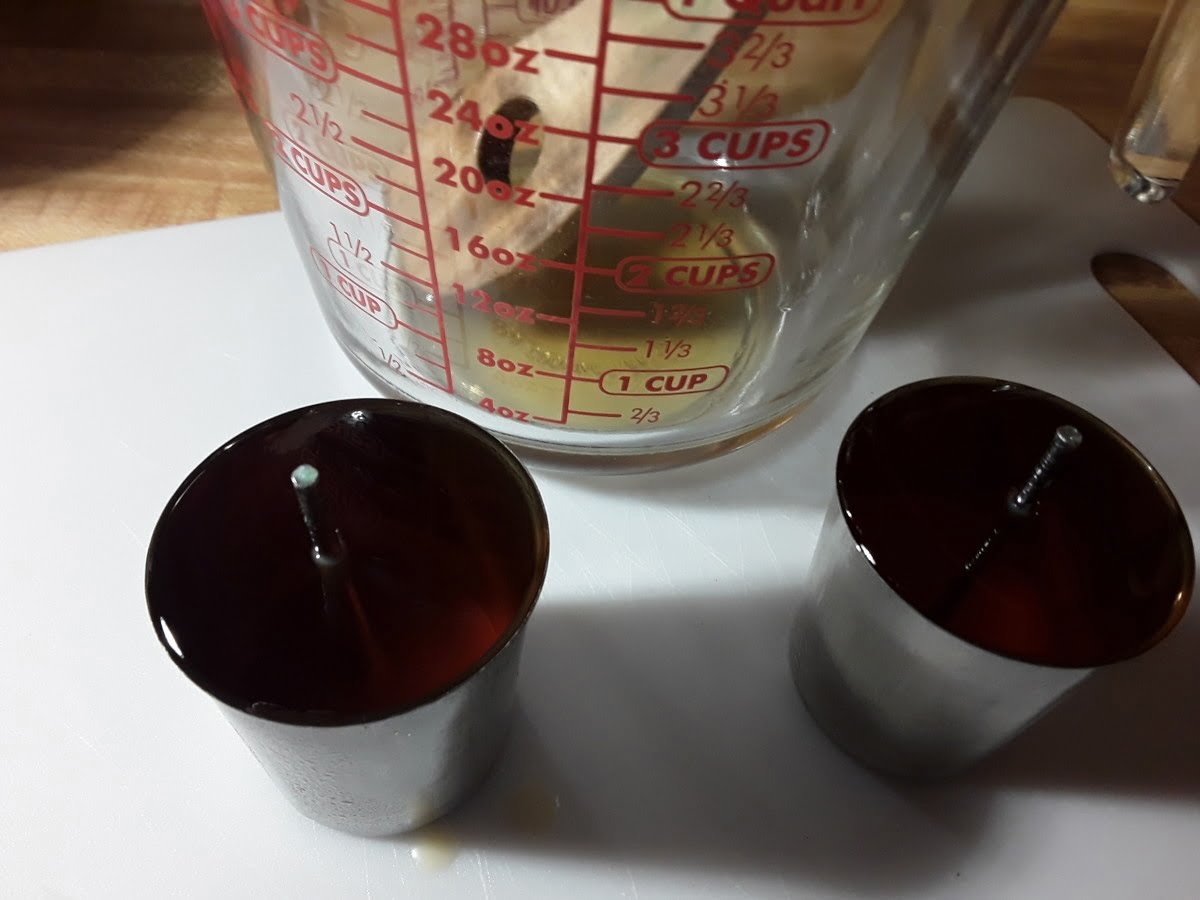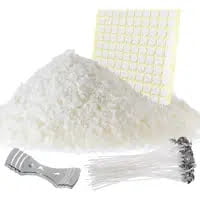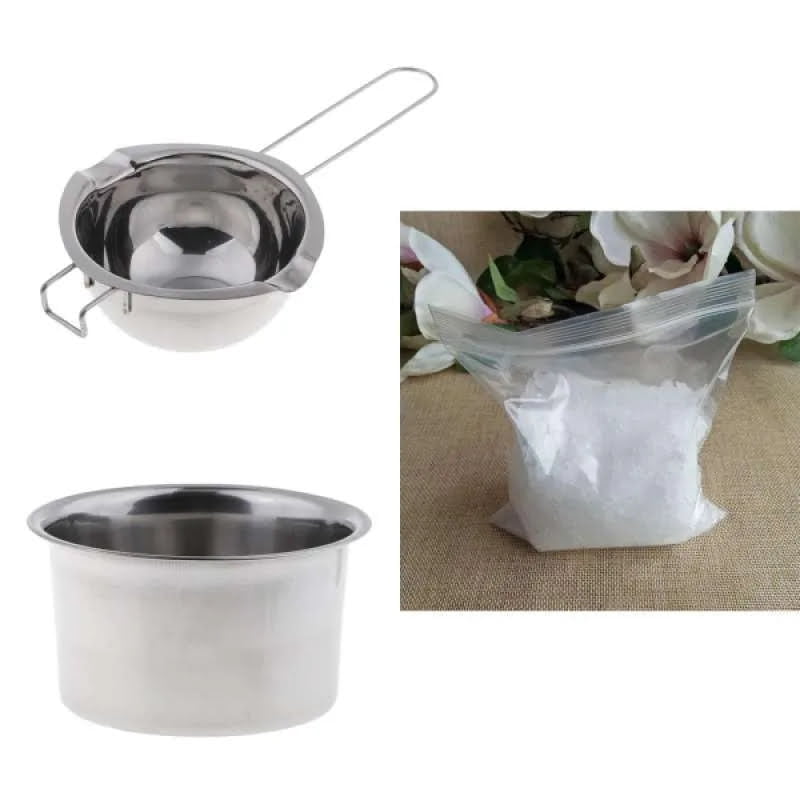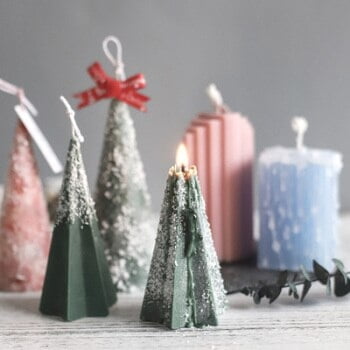Are you looking to elevate your candle making game? Look no further than the best wood wick for candle making. Wood wick candles are a popular choice among candle enthusiasts, as they offer a unique and cozy ambiance with their crackling sound and warm glow. In this article, we will explore the world of wood wick candles, including their benefits, types, and factors to consider when choosing the best wood wick for your candle making projects.
Wood wick candles have gained popularity in recent years due to their aesthetic appeal and eco-friendly nature. Unlike traditional cotton wicks, wood wicks are made from sustainable materials such as cherry, cedar, or birch. They not only provide a clean and long-lasting burn but also create a captivating sensory experience with their natural crackling sound that mimics the soothing sound of a fireplace.
In addition to their unique ambiance, wood wick candles offer several benefits that make them an attractive choice for candle makers. They are known for their clean burn with minimal soot, as well as their ability to release fragrance more efficiently than cotton wicks.
Moreover, wood wicks are easy to light and require minimal maintenance during burning, making them a convenient option for both novice and experienced candle makers alike. With various types of wood wicks available in the market, it’s essential to understand the different characteristics of each type before choosing the best one for your candle making project.
Benefits of Using Wood Wicks
Wood wick candles have become increasingly popular due to their unique aesthetic and soothing crackling sound when lit. One of the main benefits of using wood wicks in candle making is the environmentally-friendly nature of this material. Unlike traditional cotton wicks, wood wicks are sustainable as they are sourced from ethically managed forests, making them an eco-friendly choice for candle makers concerned about their environmental impact.
In addition to being environmentally friendly, wood wicks also offer a longer and cleaner burn than cotton or zinc wicks. Wood wicks have a unique self-trimming feature that helps maintain a consistent and even flame, reducing the amount of soot and smoke produced during the burning process. This not only contributes to a cleaner burn but also makes for a more enjoyable sensory experience for candle enthusiasts.
Moreover, wood wicks are known for their ability to create a cozy ambiance with their gentle flickering flame and soft crackling sound. This makes them ideal for creating a warm and inviting atmosphere in any space.
The natural charm of wood wick candles has made them a popular choice for both personal use and gifting purposes. When selecting the best wood wick for candle making, it’s essential to consider these benefits as well as other factors such as size, shape, and type of wax being used.
| Benefits | Description |
|---|---|
| Environmentally Friendly | Wood wicks are sourced from ethically managed forests |
| Cleaner Burn | Produces less soot and smoke, contributing to a cleaner burn |
| Ambiance | Create a cozy atmosphere with gentle flickering flame and crackling sound |
Types of Wood Wicks
When it comes to making wood wick candles, there are a few different types of wood wicks to choose from. Each type has its own unique characteristics and burning qualities, so it’s essential to understand the differences before making a selection for your candle making project.
Here are some popular types of wood wicks used in candle making:
- Softwood Wicks: These wicks are made from softwood trees such as cedar or pine. They tend to have a subtle crackling sound when burned, adding to the ambiance of the candle.
- Hardwood Wicks: Hardwood wicks are typically made from woods like cherry, maple, or oak. They have a slower burn rate and produce a more consistent flame compared to softwood wicks.
- Ribbon Wicks: These wicks are made by weaving together wooden ribbons. They offer an elegant and modern look to candles and provide a wider burn pool.
Choosing the best wood wick for candle making depends on factors such as the type of wax used, the diameter of the container, and personal preference for crackling sound or burn rate. It’s essential to consider these factors when deciding which type of wood wick is best suited for your project.
Factors to Consider When Choosing the Best Wood Wick
When choosing the best wood wick for your candle making project, there are several important factors to consider. The type of wood wick you choose can greatly impact the performance and aesthetic of your candles. Here are some key factors to keep in mind when selecting the best wood wick for your candle making needs:
1. Wick Size: The size of the wood wick is crucial in ensuring an even burn and proper melt pool formation in your candles. It’s important to select a wood wick that is appropriate for the diameter of your candle jar. Using a wick that is too small may result in tunneling, while a wick that is too large can cause smoking and uneven burning.
2. Wick Thickness: The thickness of the wood wick also plays a role in how evenly the candle burns. Thicker wicks tend to produce a larger flame, which may be ideal for larger candles or those with a wider diameter. Thinner wicks are better suited for smaller candles or containers.
3. Wood Type: Different types of wood will produce varying experiences when used as a wick in candles. Some popular choices include cherrywood, birch, cedar, and maple. Each type of wood brings its own unique crackling sound and aroma when burned, so consider what kind of ambiance you want to create with your candles.
When considering these factors, it’s important to also take into account the specific requirements of your candle making project, such as the type of wax being used and any additional fragrances or colorants being added to the candles.
Ultimately, finding the best wood wick for candle making involves experimenting with different options until you find one that suits your preferences and needs. Remember to consider factors such as size, thickness, and wood type when selecting the perfect wood wick for your next candle making endeavor.
Top 5 Best Wood Wicks for Candle Making
When it comes to creating the perfect wood wick candle, choosing the right wood wick is crucial. The best wood wick for candle making will not only enhance the aesthetic appeal of your candles but also contribute to a better burning experience.
With so many options available in the market, it can be overwhelming to determine which wood wick is best suited for your candle making project. To help you make an informed decision, we have curated a list of the top 5 best wood wicks for candle making.
Maple Wood Wicks
Maple wood wicks are known for their clean burn and minimal soot production. They create a delightful crackling sound when lit, adding a cozy ambiance to any space. These wicks work well with a variety of wax types and are ideal for creating both container and pillar candles.
Cherry Wood Wicks
Cherry wood wicks are popular for their natural beauty and excellent performance. They offer a steady flame and good scent throw, making them suitable for scented candles. Additionally, cherry wood wicks have a distinct grain pattern that adds visual interest to the candle’s appearance.
Cedar Wood Wicks
Cedar wood wicks are favored for their strong fragrance throw and long burn time. They provide a consistent flame and are well-suited for larger diameter candles. The natural aroma of cedar adds an extra dimension to the candle’s overall sensory experience.
Birch Wood Wicks
Birch wood wicks are valued for their thin composition, which allows them to create a delicate yet steady flame. These wicks produce minimal mushrooming and ash residue, resulting in a cleaner burn compared to other wood wick options.
Redwood Wicks
Redwood wicks are renowned for their durability and ability to withstand longer burning periods without becoming excessively charred. They offer an elegant aesthetic appeal and complement various candle designs, making them a versatile choice for candle makers.
By considering these top 5 best wood wicks for candle making, you can choose the most suitable option based on your specific preferences, desired visual effect, burn characteristics, and fragrance requirements when crafting high-quality candles that embody both beauty and functionality.
Tips for Using Wood Wicks in Candle Making
Proper Placement and Centering
When using wood wicks in candle making, it is important to ensure that the wick is properly placed and centered in the container. This can be done by using a wick holder or simply by carefully placing the wick in the center of the container before pouring the wax. The proper placement and centering of the wood wick will ensure an even burn and prevent any potential issues such as tunneling.
Trim the Wick
It is essential to trim the wood wick to an appropriate length before each use. The ideal length for a wood wick is around 1/8 to 1/4 inch. Trimming the wood wick will help control the size of the flame and prevent any excessive smoking or mushrooming. This practice will also contribute to a cleaner and longer burn for your candle.
Testing and Troubleshooting
As with any new candle making project, it is crucial to test your wood wick candles for performance. Keep track of how well they burn, how evenly they melt, and if there are any issues with soot or smoke. Additionally, keep an eye out for any potential troubleshooting that may be necessary, such as adjusting the size of the wood wick or changing other factors in your candle making process.
Incorporating these tips into your candle making process will help you achieve optimal results when using the best wood wicks for candle making. By carefully placing and centering the wick, trimming it to an appropriate length, and testing for performance, you can create high-quality wood wick candles that burn cleanly and evenly, providing a delightful experience for you and your customers.
Conclusion
In conclusion, wood wick candles have become increasingly popular due to their unique crackling sound and aesthetic appeal. Their benefits include a cleaner burn, longer-lasting candles, and a more sustainable choice compared to traditional cotton wicks. When considering the best wood wick for candle making, it’s important to take into account factors such as the type of wax being used, the size of the candle, and personal preferences for burn performance.
There are various types of wood wicks available in the market, each offering different features and benefits. It’s essential to consider factors such as thickness, width, and material composition when choosing the best wood wick for your candle making project. Some of the top choices for wood wicks include cherrywood, cedarwood, and birchwood wicks which provide different burning characteristics that may cater to individual preferences.
When using wood wicks in candle making, it is important to follow recommended guidelines for optimal results. This may include properly trimming the wick before each use and using a proper adhesive when securing the wick in place. By selecting the best wood wick for your specific needs and following best practices for use, you can ensure a successful and enjoyable candle making experience.
Frequently Asked Questions
What Wood Is Best for Candle Wicks?
The best wood for candle wicks is usually untreated, natural and lead-free wood. Some popular choices include cherry, red cedar, or maple wood, which are known for their clean burn and minimal soot production.
What Is the Best Wick to Use When Making Candles?
When making candles, the best wick to use depends on the type of wax being used and the diameter of the candle. For soy wax, cotton or hemp wicks are often recommended due to their ability to burn evenly. However, for beeswax candles, a braided cotton wick may be more suitable.
How Do I Know What Wood Wick to Use?
Knowing what wood wick to use involves considering the size and type of candle being made, as well as the materials used in the candle. Researching and testing different types of wood wicks with various combinations of wax and fragrances can help determine which wood wick is best suited for a particular candle-making project.

Welcome to my candle making blog! In this blog, I will be sharing my tips and tricks for making candles. I will also be sharing some of my favorite recipes.





